In the age of digital transformation, global online learning platforms like Coursera are redefining access to education, professional development, and career advancement. With over 100 million learners worldwide and partnerships with industry leaders and top universities, Coursera offers a vast catalog of video lectures, professional certificates, and full degree programs.
But how does Coursera ensure seamless video playback, user experience (UX) consistency, and content quality across diverse geographies and bandwidth conditions?
The answer lies in a powerful combination of Content Delivery Networks (CDNs), intelligent caching strategies, and rigorous video testing protocols.
💡 Here’s what you’ll learn
🚀 How Coursera overcomes global video delivery challenges using CDN, edge servers, and adaptive streaming
🚀 Why HD video and optimized caching are essential for seamless online learning experiences
🚀 Where performance bottlenecks occur in eLearning platforms and how Coursera solves them
🚀 What multi-device testing reveals about user experience across mobile, tablets, and desktops
🚀 How real-time monitoring, load balancing, and QA strategies power Coursera’s scalability at peak traffic

Together, these technologies and practices form the backbone of Coursera’s Quality Assurance framework.
Understanding Coursera’s Global Video Delivery Challenge
Delivering content to a global audience isn't just about uploading a lecture to the cloud. Coursera’s learners span rural India to urban California, relying on everything from fiber broadband to spotty mobile data. Streaming machine learning tutorials or Artificial Intelligence walkthroughs with heavy data visuals places immense stress on bandwidth.
Without a proper content delivery network, learners would suffer from buffering, slow loading, and low-resolution streams—seriously damaging the customer experience and diminishing trust in Coursera’s educational value.

To overcome this, Coursera has adopted a robust, scalable approach using CDN content delivery network solutions, adaptive caching, and proactive Quality Management Systems for continuous delivery optimization.
Why HD Video Delivery Matters in Online Learning?
In any online learning environment—especially for technical courses in data science, coding bootcamps, or project management—video quality is not just a luxury; it’s a necessity. Poor visuals or audio-video desynchronization can cause:
- Disengagement due to a frustrating user experience
- Misinterpretation of content, especially in technical subjects
- Reduced learning progress and lower course completion rates
Coursera addresses this by prioritizing high-definition (HD) and even 4K video content delivery through robust cloud content delivery network platforms like Cloudflare CDN, Azure Content Delivery Network, and other top providers.
These global CDNs work by distributing educational materials through edge servers, delivering content closer to the learner’s location. Smooth playback is further enhanced with adaptive bitrate streaming, which automatically adjusts video quality based on the learner’s internet speed—eliminating buffering without sacrificing clarity.
This optimization is not just a technical improvement—it directly impacts Key Performance Indicators (KPIs) for online education, such as:
- Higher learner retention rates
- Improved course completion statistics
- Increased overall Customer Satisfaction and Product Quality
Key Performance Bottlenecks in eLearning Platforms
Despite the use of modern technology, eLearning platforms often encounter performance issues that impact scalability and Customer Experience:
- Latency and buffering during peak hours
- Server overloads in specific geographic zones
- Poor caching strategies, leading to repetitive data download
- Inadequate support for multi-device streaming on mobile, tablet, and desktop
- Absence of region-specific edge servers, causing delays in course content access

They leverage edge server technologies—such as secure access server edge and power edge server setups—to deliver fast, localized content access. With robust content delivery network (CDN) capabilities and continuous Quality Control through Regression Testing and Acceptance Testing, their infrastructure seamlessly supports millions of users without sacrificing performance.
What Is a CDN and How Does Coursera Use It?
In the world of online learning platforms, where video lectures, machine learning models, and peer-reviewed projects are streamed globally, maintaining speed and reliability is non-negotiable. This is where Content Delivery Networks (CDNs) become indispensable
So, what is a CDN?
A CDN (Content Delivery Network) is a network of edge servers and data centers that deliver internet content—like video, images, stylesheets (e.g., bootstrap CDN, fontawesome CDN, jquery CDN), and HTML—quickly and reliably. CDNs are the backbone of modern cloud content delivery network services.

For Coursera, which delivers full degree programs, professional certificates, and courses like Python for Everybody and 3D animation, the use of a global content delivery network is critical. It ensures course content is available in real-time with minimal buffering, enhancing the overall user experience across continents.
The Role of Edge Servers in Reducing Latency
Edge servers are at the core of CDN networks. Rather than forcing users to load content from a centralized origin server (which could be thousands of miles away), edge servers store cached versions of frequently accessed data at locations closer to the end users.
Coursera uses a distributed power edge server infrastructure to ensure video content delivery is fast and uninterrupted. Whether a student is accessing online learning materials from rural India or metropolitan Germany, the platform ensures the same high-speed access by intelligently routing requests to the nearest secure access server edge.
This setup minimizes latency, increases Customer Satisfaction, and supports Continuous Improvement in learning outcomes. The integration of cloudflare CDN, azure content delivery network, and other content delivery network providers helps Coursera deliver on this promise.
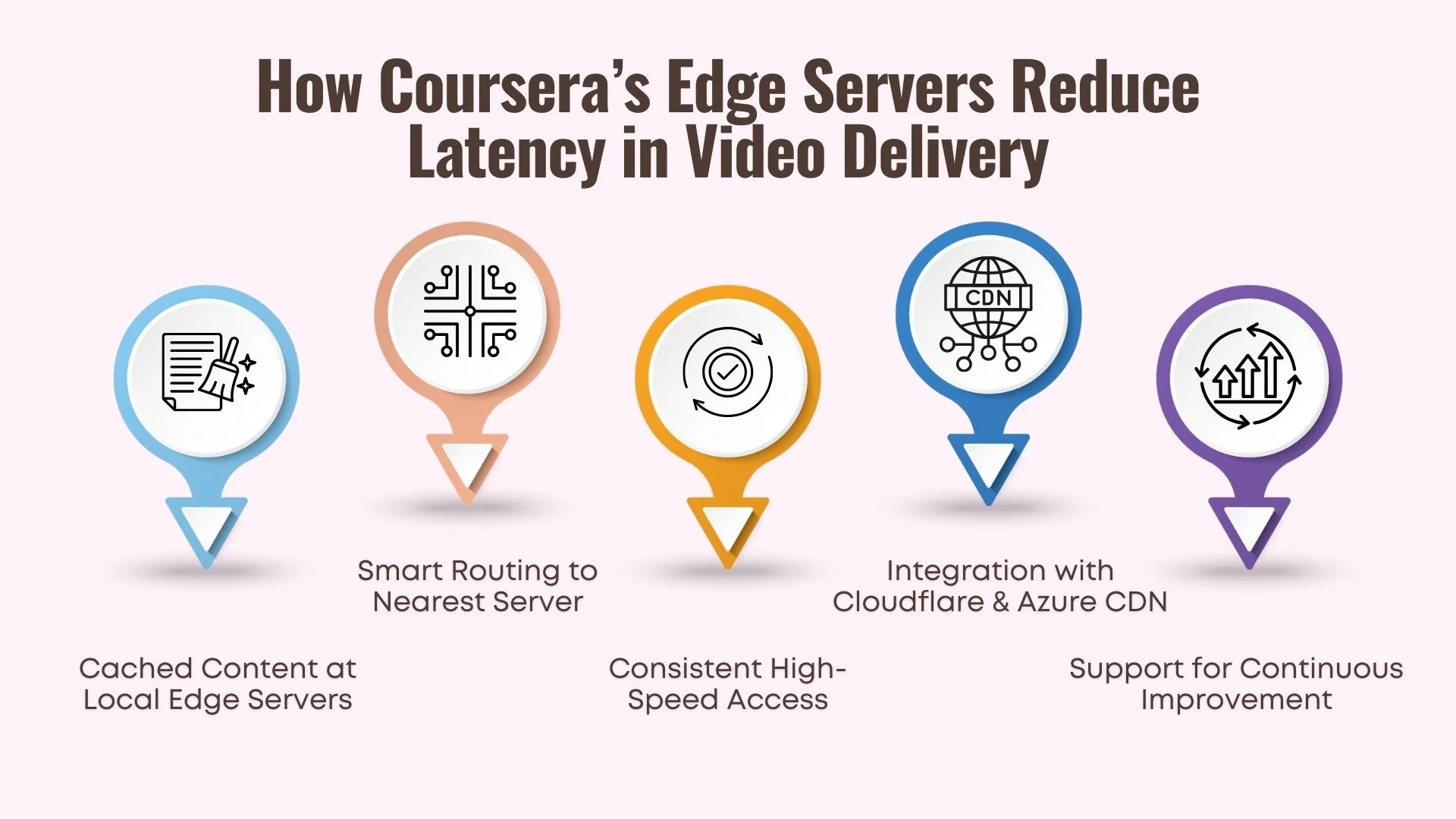
Content Distribution Through Regional PoPs
To further improve speed and Customer Experience, Coursera uses Regional Points of Presence (PoPs) localized servers within the CDN content delivery network that store and deliver content in specific geographic zones.
These PoPs handle the dynamic distribution of video content delivery network files, lecture notes, quizzes, and assessments to learners in that region. They also sync periodically with origin servers to ensure content accuracy and relevance. This method drastically reduces load times and ensures optimal delivery of HD video, especially for content-heavy courses like data science, Generative AI, and software development.
With intelligent PoP orchestration, Coursera eliminates performance bottlenecks, enabling learners to focus on learning progress without technological disruptions.

Caching Strategies That Improve Load Times
Caching is another vital pillar in Coursera’s strategy to deliver top-tier user experience. But what is caching, exactly?
At its core, caching is the process of storing copies of files or data in a temporary storage location (cache), so future requests can be served faster. In the context of online learning, this means storing video segments, images, and page data so returning users—or even new users from the same area—experience reduced load times and better responsiveness.
Coursera employs a mix of caching strategies, caching services, and application caching to reduce bandwidth consumption, minimize load on origin servers, and improve Customer Experience.
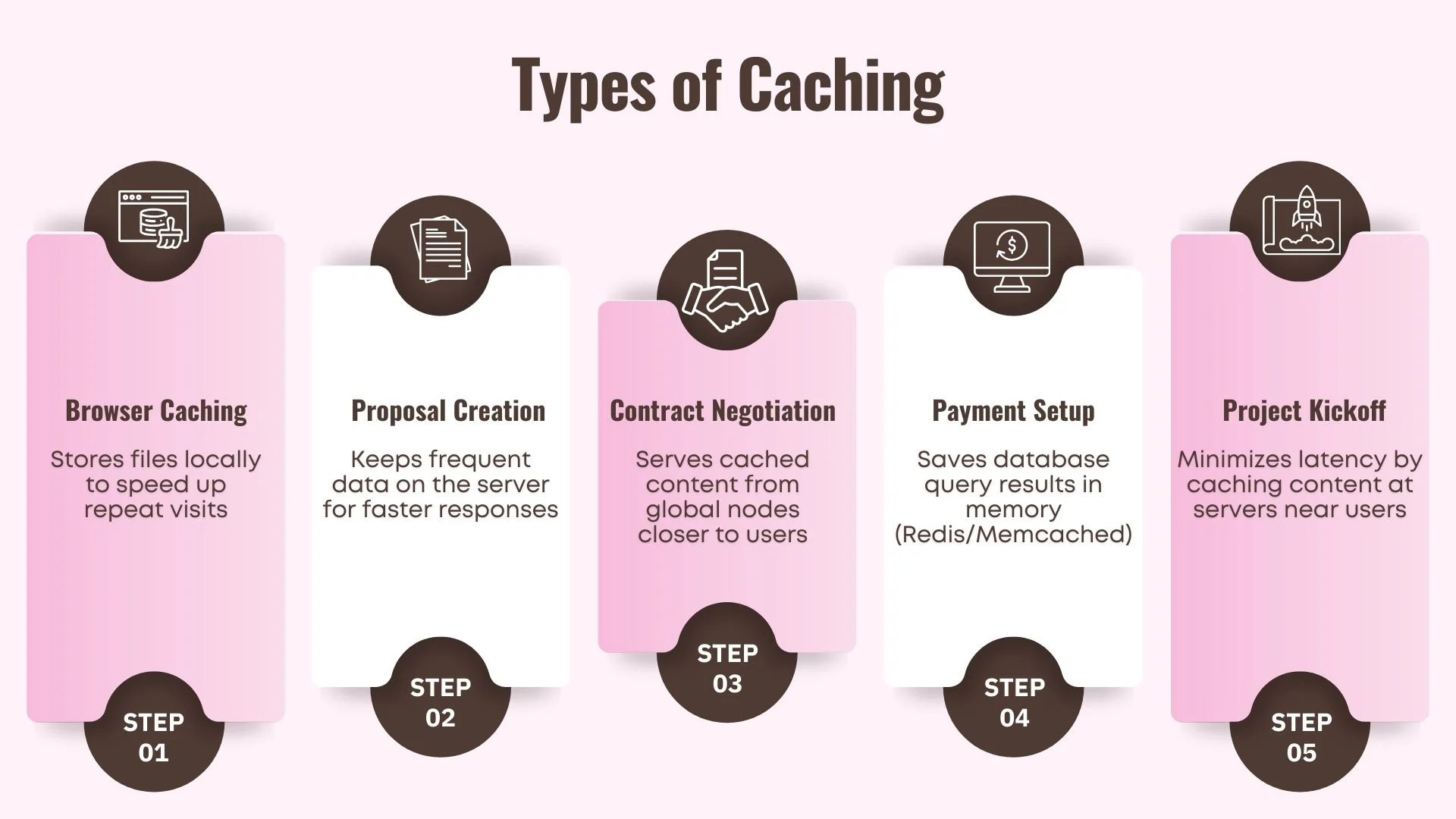
Adaptive Bitrate Streaming for Smooth Playback
While not a traditional caching strategy, Adaptive Bitrate Streaming is one of Coursera’s most powerful streaming optimization techniques. It dynamically adjusts video quality in real time based on a learner’s internet speed, device type, and network conditions—ensuring smooth video playback without buffering or stalls.
Instead of pausing the stream, the video seamlessly shifts between high, medium, or low resolutions, which is especially valuable for mobile users or learners in regions with fluctuating connectivity.
From a Quality Management Systems perspective, this technique reflects Continuous Quality Improvement, leveraging real-time performance data to enhance the user experience. It also aligns with Statistical Process Control and Process Capability by maintaining consistent playback quality across diverse network and device profiles.

How Caching Enhances Repeat User Experience?
For returning learners—especially those enrolled in long-term courses or professional development programs—smart caching can make a noticeable difference.
Effective data caching ensures that frequently accessed content like video lectures, slides, and animations doesn’t need to be reloaded every time. This not only speeds up performance but also reduces user frustration, leading to a smoother, more consistent Customer Experience.
Platforms like Coursera leverage advanced video testing to monitor caching performance. Their system can identify bottlenecks in content delivery network (CDN) caching and implement Process Improvement strategies to keep content delivery seamless.
Additionally, for users switching between devices—such as starting a course on a mobile app and continuing on a laptop—geo caching and caching data help maintain session continuity. This ensures a frictionless learning path and boosts overall learner satisfaction.
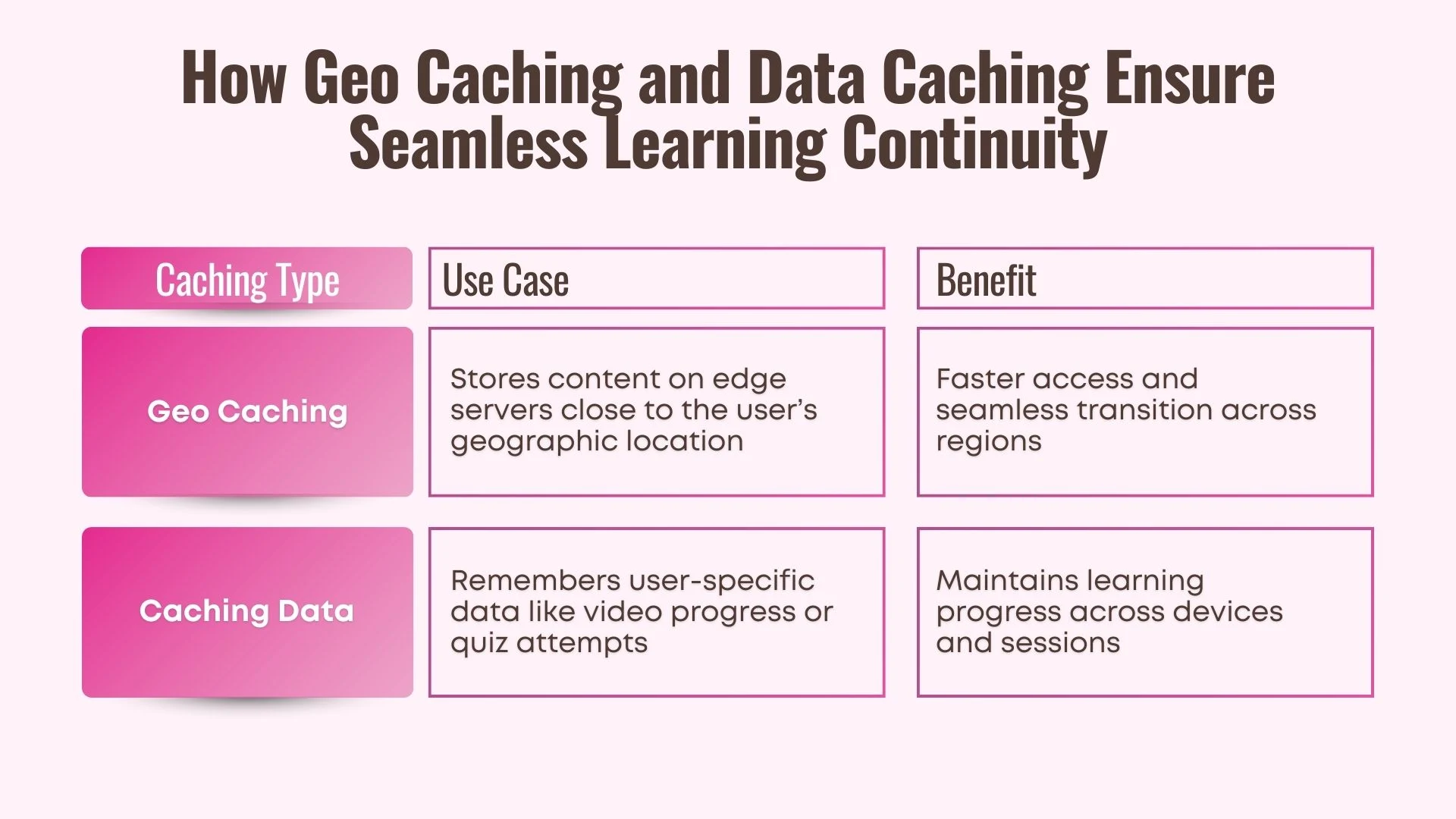
Multi-Device Testing: Ensuring a Consistent UX Across Screens
Modern learners expect to access online learning platforms from anywhere—smartphones, tablets, desktops, smart TVs, or even through mobile apps integrated with virtual assistants.
This expectation brings a major challenge: device fragmentation.
With thousands of screen sizes, OS versions, browsers, and network conditions in play, delivering a consistent and intuitive user experience requires rigorous software testing, proactive Quality Assurance, and deep Customer Insights.
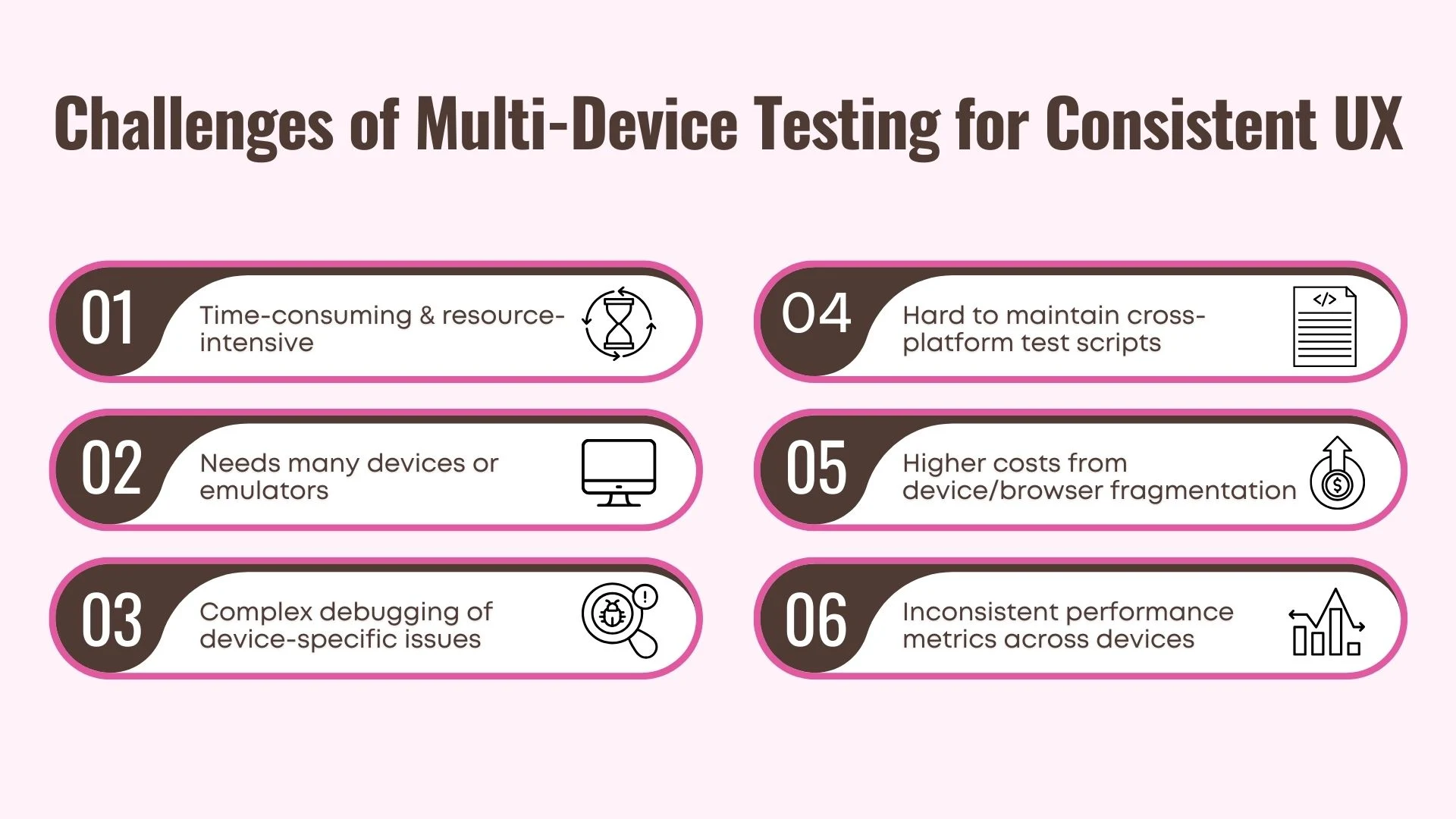
Device Fragmentation and Testing Challenges
A major scalability challenge for EdTech platforms is ensuring consistent performance across a wide range of devices. Whether it's rendering 3D animation on an iPad or maintaining audio sync in video lectures on Android phones, the variety of hardware and software configurations creates countless testing scenarios.
Coursera tackles this head-on by incorporating test automation, Regression Testing, and Acceptance Testing into its development and video testing workflows. These quality checks help maintain high Product Quality, identify Data Quality issues early, and ensure alignment with strict Quality Standards.
By also applying Six Sigma Methodology and Continuous Improvement principles, Coursera fine-tunes its platform’s performance while keeping operational costs in check—ensuring learners continue to get reliable access to high-quality content, even through financial aid and affordable learning options.

Manual QA and Automation in Multi-Device Testing
Coursera follows a hybrid Quality Assurance model, combining the strengths of both manual and automated testing to ensure a consistent experience across devices. Automated testing efficiently handles repetitive tasks—like video testing on 1,000+ devices—while manual QA covers more nuanced aspects such as UX design, visual consistency, and user interaction flow.
Manual testers simulate real-life user actions—such as switching networks during a lecture or accessing coding bootcamps on budget devices like Chromebooks—to catch issues automation might miss.
At the same time, automated scripts are integrated with Coursera’s content delivery network software—including platforms like Cloudflare CDN and Azure CDN—to validate file delivery and system performance across multiple environments.
This dual testing strategy improves Process Optimization, reduces critical bugs, and ensures a smooth, unified Customer Experience at every user touchpoint.
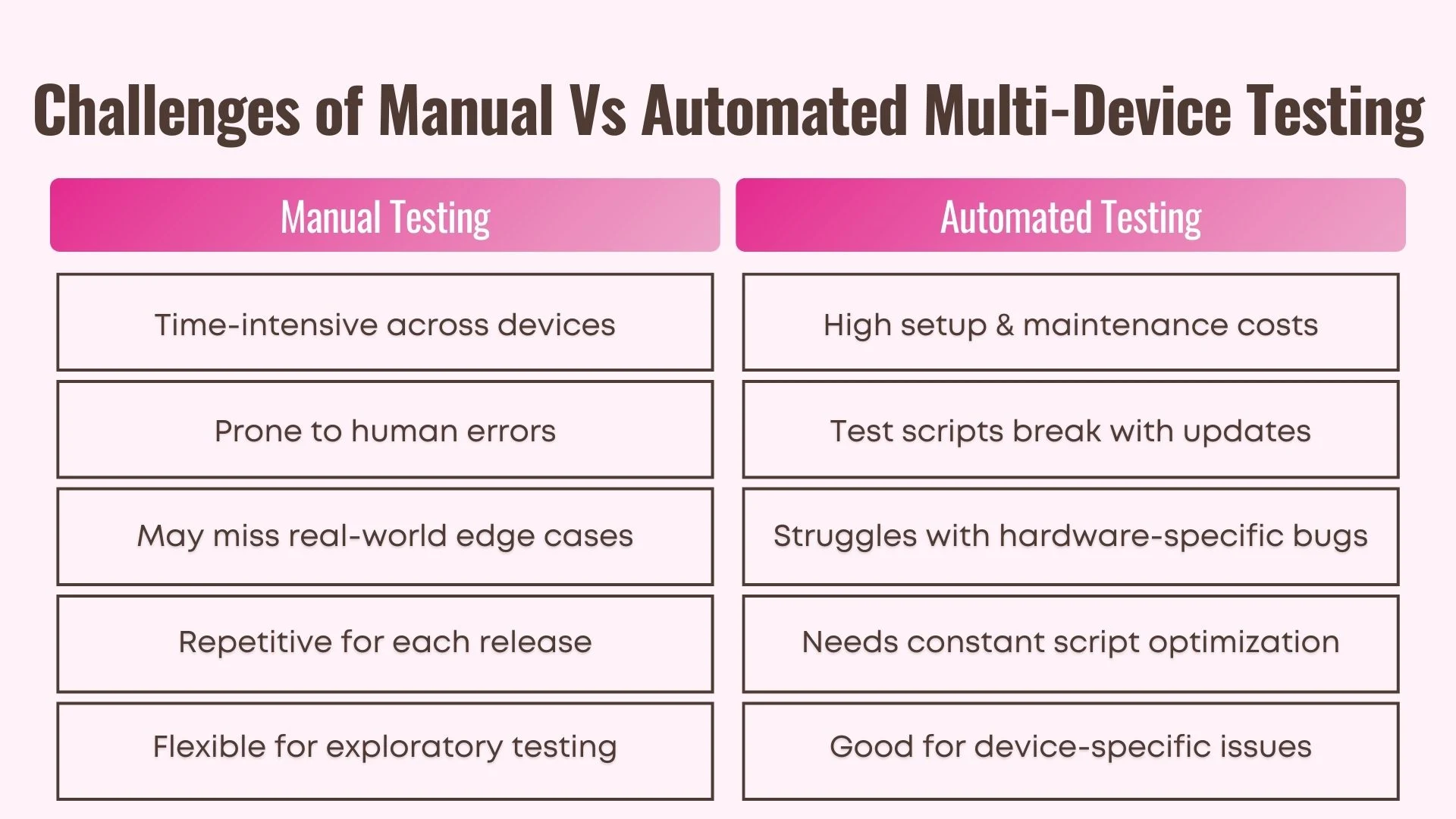
Real-World Example: How Coursera Handles Peak Traffic
During peak enrollment seasons like university admissions or global upskilling drives—Coursera sees massive surges in learners streaming lectures and accessing course materials at the same time.
To handle this demand without delays or playback issues, Coursera uses:
- Regional CDNs to deliver content from the nearest servers, reducing latency during high-traffic hours.
- Smart caching to speed up repeated access to popular courses and prevent server overload.
- Ongoing video testing to ensure smooth playback across devices and varying network conditions.
These measures allow Coursera to keep courses running seamlessly, even when traffic is at its highest.
Performance Monitoring and Load Balancing in Action
The surge in activity during peak enrollment seasons is handled through Coursera’s robust performance engineering. Global CDNs like Cloudflare CDN and Azure Content Delivery Network push content to edge servers at key Points of Presence (PoPs), keeping it close to learners for faster delivery.
Adaptive bitrate streaming fine-tunes video quality to match each learner’s internet speed, ensuring high-resolution playback without buffering.
Meanwhile, load balancing tools within Coursera’s CDN software spread traffic evenly across servers. If one server is overloaded or experiences latency, traffic is instantly redirected to healthier nodes.
Real-time performance monitoring tracks response times, buffering rates, and cache hit ratios, ensuring that even at peak traffic, courses remain accessible and uninterrupted.
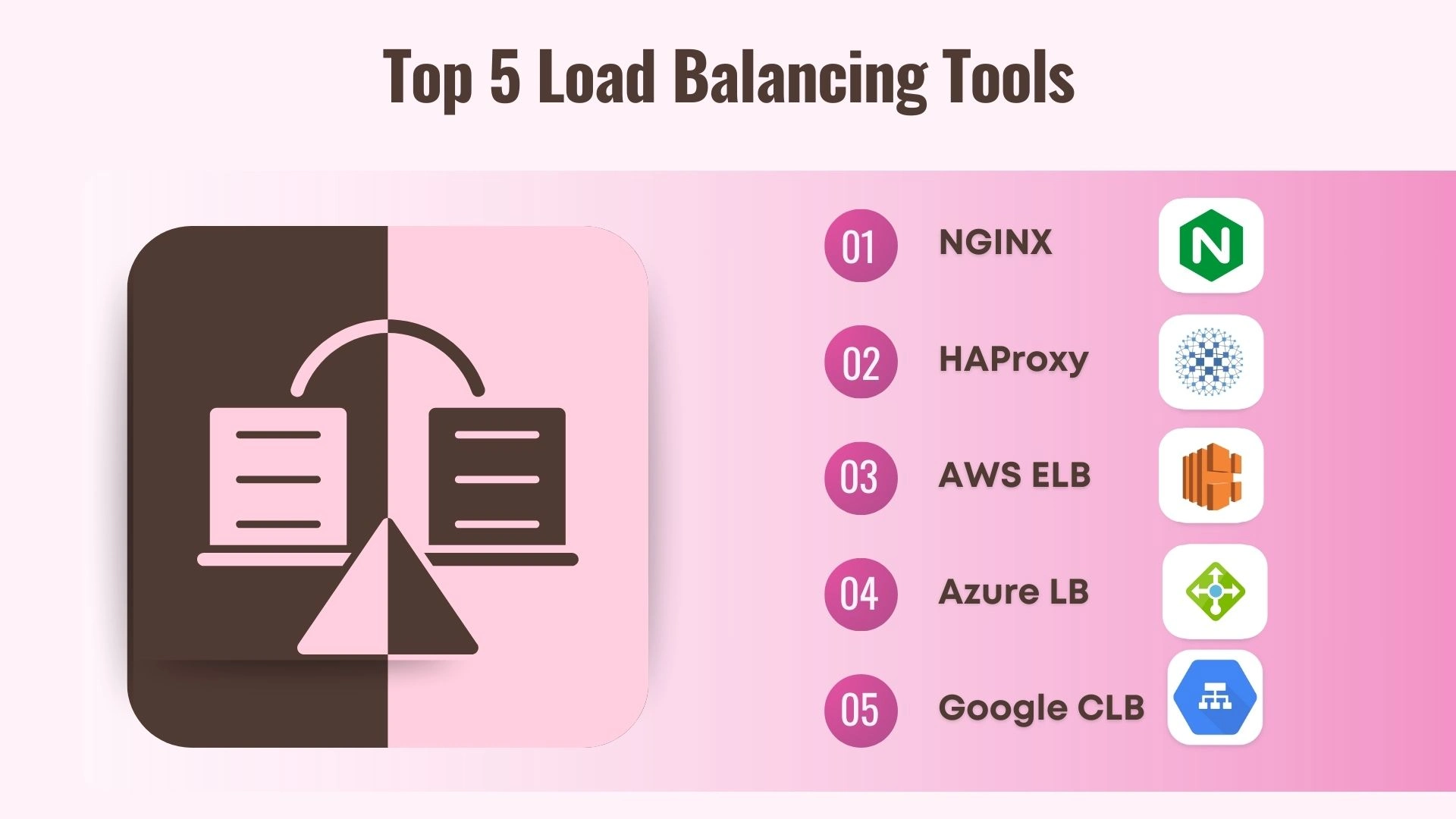
Real-time performance monitoring tools track KPIs like response times, buffering, and CDN cache hit rates. These metrics fuel Continuous Quality Improvement across Coursera’s engineering and QA teams.
Behind the scenes, video testing automation simulates diverse devices, networks, and locations. Combined with manual Acceptance Testing and Regression Testing, Coursera guarantees a consistent, high-quality experience—whether on desktop or mobile, from New York to Nairobi.
Lessons for EdTech Platforms from Coursera’s Model
Coursera’s robust model holds valuable insights for emerging EdTech platforms, coding bootcamps, and educational content providers aiming to scale.
1. Use a CDN for Speed & Scale
A reliable Cloud Content Delivery Network ensures fast, smooth access to learning materials worldwide. Coursera uses top CDN providers to reduce latency and improve content availability.
2. Smart Caching Improves Performance
Coursera implements geo and application caching to reduce load times and enhance repeat user experience. Smaller platforms can do the same with minimal cost.
3. Invest in QA & Testing
From automated testing to real-world UX checks, strong Quality Assurance ensures platform stability. Coursera integrates QA into CI/CD pipelines for faster, more confident releases.
4. Optimize Video Delivery
Adaptive bitrate streaming and video testing help Coursera serve students even in low-bandwidth areas—crucial for mobile and global learners.
Bottom Line:
Coursera’s QA success lies in combining CDN, caching, and testing within agile pipelines. EdTech platforms of any size can follow this model for better scalability and user experience.
Frugal Testing offers scalable QA services by blending QA outsourcing services, test automation services, and agile-ready processes. With lightweight QA tools, their QA testing services boost speed, quality, and security making software testing services efficient, cost-effective, and future-ready.
In conclusion, Coursera’s smart use of CDN, efficient caching strategies, and rigorous video QA ensures learners worldwide enjoy fast, reliable, and high-quality content. By minimizing latency, optimizing bandwidth, and maintaining consistent video performance, the platform delivers a seamless learning experience. This blend of technology and quality assurance is key to supporting Coursera’s global education mission.
People Also Ask
👉Can small or mid-sized EdTech platforms implement a similar CDN and caching infrastructure as Coursera?
Yes, smaller online learning platforms can use scalable solutions like Cloudflare CDN, bootstrap CDN, or free content delivery network services. With smart caching strategies and budget-friendly content delivery network providers, high performance is achievable at lower costs.
👉How does Coursera handle content delivery in countries with restricted or limited access to global CDNs?
Coursera uses regional edge servers and alternative content delivery network (CDN) routes to optimize content network delivery in restricted regions. It often combines secure access server edge setups with localized caching for uninterrupted access to video lectures and course content.
👉What are the cost implications of using edge servers and adaptive bitrate streaming for video platforms?
While edge servers and adaptive bitrate streaming enhance the user experience, they can increase operational costs. However, platforms can optimize cdn to usd usage by leveraging video content delivery network solutions and monitoring usage via content delivery network cdn software.
👉How frequently should video platforms perform multi-device and cross-browser testing?
Regular multi-device testing and video testing should be done at least once per major release or monthly for active platforms. This ensures consistent user experience across screen sizes and browsers, especially for online learning platforms with global reach.
👉Are there open-source tools or affordable alternatives for video testing and CDN performance monitoring?
Yes, tools like Lighthouse, JMeter, and WebPageTest offer video testing and content delivery network performance insights. These affordable or open-source solutions help monitor caching data, load speeds, and CDN network efficiency without heavy investment.




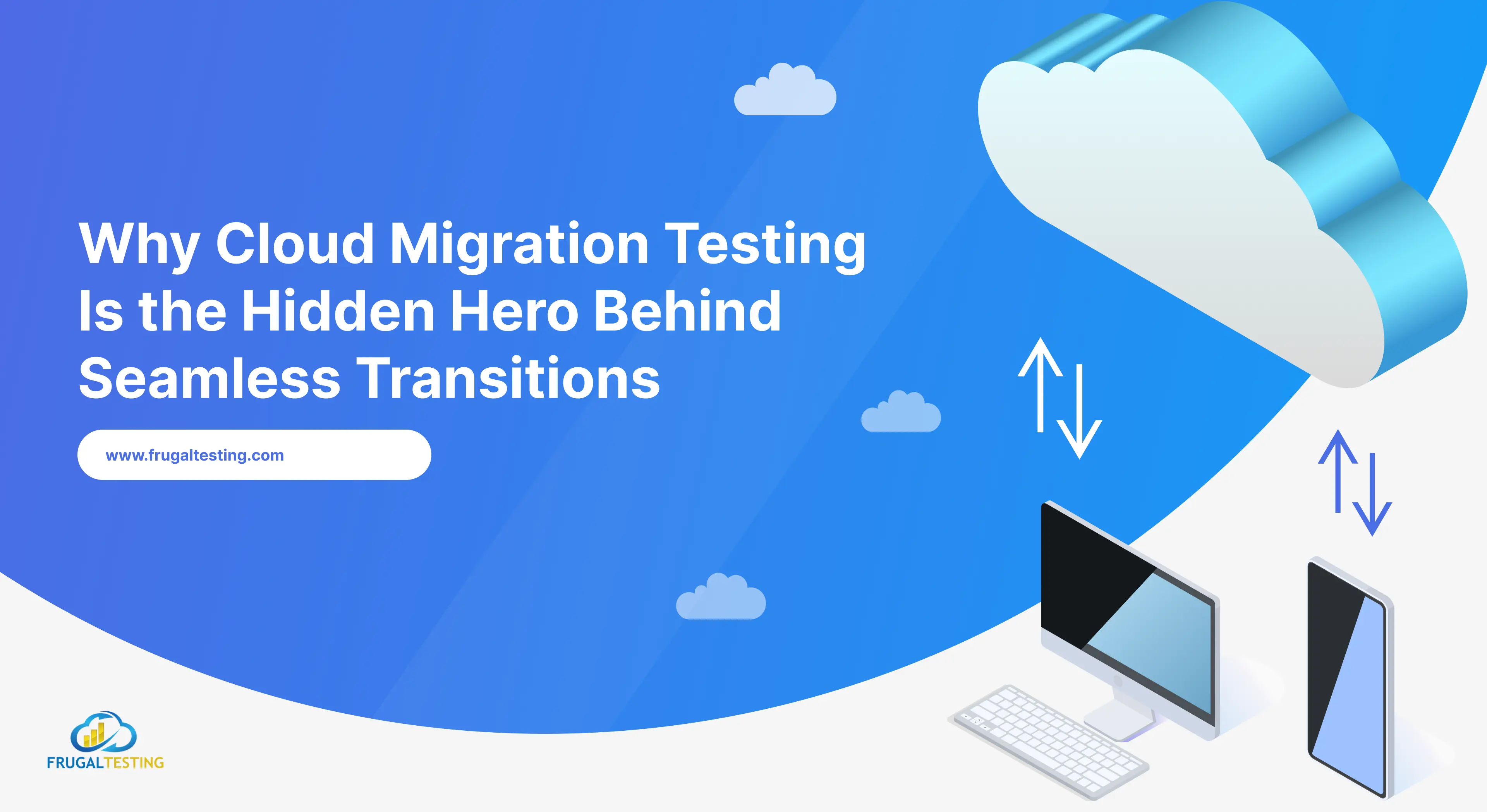
%201.webp)

